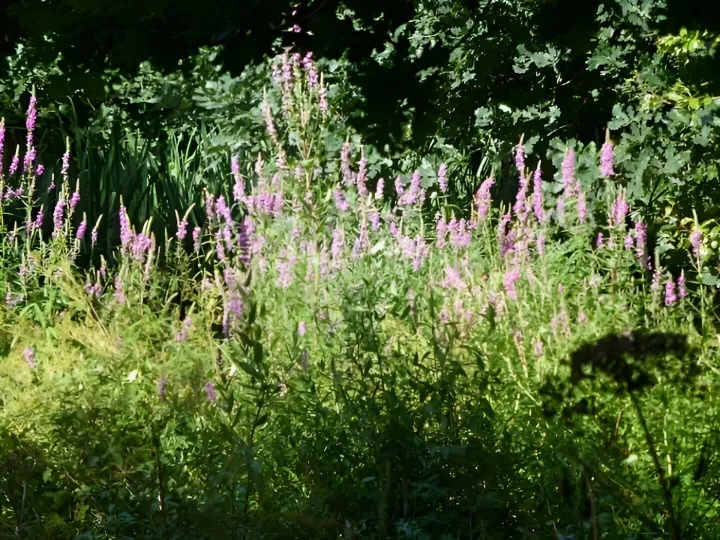When the Meadowsweet has gone – the area it previously occupied shows a glorious display of something else entirely – Purple Loosestrife. Impressive spikes of magenta flowers rise up to nine feet high amidst the grasses and the bees and other long-tongued insects (such as moths and butterflies – including Brimstones, Red-tailed Bumblebees and Elephant Hawkmoths) are having a field day amidst the proliferation of nectar-rich flowers.
We read that, "Purple-loosestrife is most frequently found in damp habitats, often in reed beds, fens, marshes and riverbanks". It is a survivor, though, and, while the Meadowsweet cannot be relied upon to give such a wonderful display each year, the Loosestrife is to be found flowering prolifically in our woodland most summers.
However, all is not lost. Research began in 1985 and today the plant is managed well by using several insects that feed on it – providing an interesting model of successful biological pest control. It appears that five species of beetle (two leaf beetles and three weevils) use purple loosestrife as their natural food source, and they can do significant damage to the plant. The two species of leaf beetle are extremely effective in wiping out a stand of purple loosestrife, being capable of defoliating up to 100% of the plants in an area. However, the real answer to invasive plants is to leave plants (and this applies to animals, too) growing in the area to which they are native. That way, their enemies are already on hand to keep them in check!

